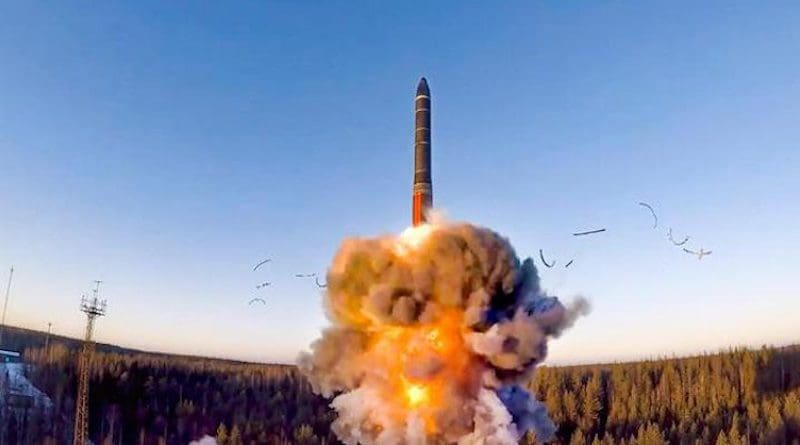Russia’s Suspension Of New START Treaty – OpEd
By Sher Bano
President Putin in his speech before the Russian Parliament announces that Moscow will suspend the implementation of New START. The conditioning of the return to the implementation is not clear.
President Putin cited Ukrainian attacks on Russian airbases and US interest in new Russian systems in the context of his aggressive behavior as grounds for suspension. Putin’s decision to suspend Russian cooperation on the treaty’s nuclear warheads and missile inspections follows Moscow’s cancellation of talks late last year that were aimed at salvaging a deal that both sides blamed on the other of violating. The United States had previously walked away from the treaty; during the Trump administration, the US refused to enter into negotiations to extend it, accusing Moscow of flagrant violations. But when President Joe Biden took office in 2021, his administration signed a five-year extension. The suspension of the implementation of the New START means that not only will there be no BCC inspections and meetings, but also the exchange of information and notifications will end. However, suspension of the treaty is not the same as abandoning the treaty, there will be no Russian accumulation above the limits of the treaty. But there will be far fewer means to verify this (only national technical means), so compliance will be disputed.
New START, formally known as the Treaty between the Russian Federation and the United States of America on measures for the further reduction and limitation of Strategic Offensive Arms, was signed by the Obama administration in 2010 and entered into force in February 2011 as a 10 year agreement. The treaty required both Russia and the US to commit to regular communications on the status of their nuclear arsenals, allow regular on-site inspections, and comply with limits on the number of deployed and undeployed warheads each would maintain.
Those limits include: 700 deployed intercontinental ballistic missiles (ICBMs), deployed submarine-launched ballistic missiles (SLBMs), and deployed nuclear bombers; 1,550 nuclear warheads on deployed ICBMs, deployed SLBMs, and deployed bombers; 800 deployed and non-deployed ICBM launchers, SLBM launchers, and bombers. Hours after Putin’s speech, the Russian Foreign Ministry said Russia would respect limits on nuclear weapons, even though Putin suspended participation in the pact. Russia will also continue to exchange information on ballistic missile test launches under previous agreements with the United States, the Foreign Ministry said. Since the US has not discontinued its participation, it can still send information and notifications to Russia. When Moscow suspended CFE’s participation in 2007, the US kept sending information until 2011, but it is doubtful whether this would be the case now.
Since New START was signed, Russia and the US have allowed each other’s compliance teams to conduct 328 on-site inspections of their reserves, and more importantly, the two nations have provided data exchanges and 25, 311 notifications about the status of their programs. Putin’s announcement and the subsequent clarification from the Foreign Ministry seemed to indicate that the inspections are permanently suspended, but they did not make it clear whether data sharing and notifications will continue.
However, things would be cleared up long before March 1, 2023, the day both sides are supposed to exchange data on the total number of their nuclear forces. The United States and Russia have also been exchanging daily messages about movements and exercises, which has helped keep both nuclear powers clear about each other’s actions. Notifications have been received every day. So if the information sharing stops, both sides would start to lose data so they can track exactly how many strategic weapons they have, and whether or not they’re in the place they’re supposed to be, and whether or not they’re acting the way they’re supposed to.
Inspections of US and Russian military sites under New START were paused by both sides in March 2020 due to the spread of the coronavirus. The US-Russia commission overseeing the treaty’s implementation last met in October 2021, but then Russia unilaterally suspended its cooperation with the treaty’s inspection provisions in August 2022 to protest US support for Ukraine. Both the US and Russia have cautiously planned their respective nuclear modernization programs based on the assumption that neither country will exceed the force levels currently dictated by New START. Without a deal after 2026, that assumption immediately goes away; both sides are likely to default to mutual mistrust amid fewer verifiable data points, which would result in the discourse being dominated by worst-case thinking about how both countries’ arsenals would grow in the future.
The writer is working as a Research Officer at the Strategic Vision Institute (SVI), a non-partisan think-tank based out of Islamabad, Pakistan.

